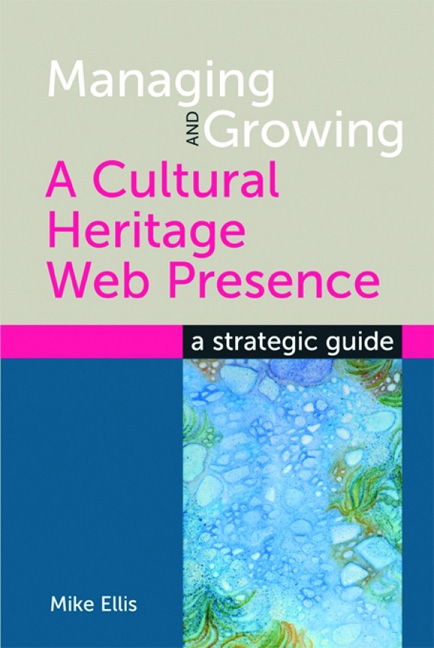Book contents
- Frontmatter
- Dedication
- Contents
- Acknowledgements
- Glossary
- Introduction
- 1 Evaluating what you have now
- 2 Building a strategic approach
- 3 Content
- 4 Marketing
- 5 Policies and guidelines
- 6 Traffic and metrics
- 7 The social web (Web 2.0)
- 8 The website project process
- 9 Away from the browser
- 10 Bringing it all together
- Bibliography
- Index
- Frontmatter
- Dedication
- Contents
- Acknowledgements
- Glossary
- Introduction
- 1 Evaluating what you have now
- 2 Building a strategic approach
- 3 Content
- 4 Marketing
- 5 Policies and guidelines
- 6 Traffic and metrics
- 7 The social web (Web 2.0)
- 8 The website project process
- 9 Away from the browser
- 10 Bringing it all together
- Bibliography
- Index
Summary
About this book
Running a web presence and making it grow in ways that benefit your organization is hard. Really hard. It is also one of the most fun and exciting things you can choose to do.
One of the reasons it is so difficult is that it requires a huge array of diverse skills. In turn this means one of two things: you either need to employ and manage a big team of people, get them aligned in one strategic direction and then make sure that you're all working together; or if you are trying to do this with a small team – or even just you! – you will need to understand a lot about a lot.
Both of these approaches are difficult in different ways. You either have a big team and it takes time to get them into shape and working together, or you have an almost endless issue with lack of resource. Cultural heritage website management requires a range of skills. The process isn't wholly technical, and it isn't wholly artistic. The best website owners are those who have a high level understanding of what the web can do for an organization as well as a good technical grasp of what can be done and the best way of doing it. Knowing what content is likely to resonate with audiences – and where to get this content – is also a vital skill.
Cultural heritage organizations are equally diverse. The content is about as good as it comes: compelling, personal and rich. The people who look after this content – curators, archivists and librarians – are passionate about what they do, and are about the most interesting people you could hope to meet. At the same time, these organizations aren't always the best at moving quickly, at responding to what they often perceive as being ‘risky’. Out there on the web, small companies are born, grow and are sold on in about the same time as it takes to get a cultural heritage exhibition or collections management system commissioned, built and live on the web. Sometimes this can be frustrating, especially if what you're trying to do is actually quite simple from a content or technical perspective but made difficult by politics or stakeholders or just plain old ‘institutional treacle'.
- Type
- Chapter
- Information
- Managing and Growing a Cultural Heritage Web PresenceA strategic guide, pp. xv - xxPublisher: FacetPrint publication year: 2011



